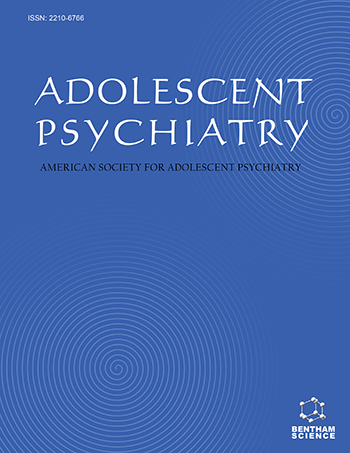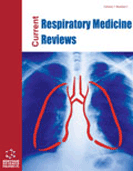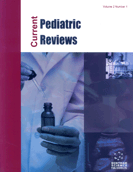Abstract
Background: ADHD, a common childhood psychiatric disorder, is known to persist into adulthood. Gaps and needs in the care of adolescents having ADHD when moving on from Children’s Mental Health Services (CAMHS) to Adult Mental Health Services (AMHS) exist and result in disruptions in care and lack of care. This report describes the outcome of a quality improvement project in Birmingham in the United Kingdom that focused on the patient journey and continuity of care.
Method: A CAMHS/AMHS transition (strategic) working group and a CAMHS ADHD transition (operational) team were set up. A validated dataset of those requiring transition was created and patient needs were reviewed. Planning and preparation for transition took place. The handover from CAMHS to AMHS was done at a joint clinic involving both services.
Results: Over a 12-month period, the number of patients on the waiting list for transfer from CAMHS to AMHS went from 134 to 14 and the waiting time for transition between the two services went from 12 months to four months. The referral rate for those in need of transfer from CAMHS to AMHS was optimised. The rate of successful handover (and transition) went from 18% to 55% after the introduction of the joint clinics.
Conclusion: A collaborative effort between CAMHS and AMHS, including the holding of joint clinics, ensured there was a comprehensive and effective transition care pathway in place for adolescents with ADHD.
Keywords: ADHD, adolescents, continuity of care, transition.
Adolescent Psychiatry
Title:Transition from Children’s to Adult Services for Patients with ADHD: A Model of Care
Volume: 5 Issue: 1
Author(s): Faizal Moosa and Tanveer Sandhu
Affiliation:
Keywords: ADHD, adolescents, continuity of care, transition.
Abstract: Background: ADHD, a common childhood psychiatric disorder, is known to persist into adulthood. Gaps and needs in the care of adolescents having ADHD when moving on from Children’s Mental Health Services (CAMHS) to Adult Mental Health Services (AMHS) exist and result in disruptions in care and lack of care. This report describes the outcome of a quality improvement project in Birmingham in the United Kingdom that focused on the patient journey and continuity of care.
Method: A CAMHS/AMHS transition (strategic) working group and a CAMHS ADHD transition (operational) team were set up. A validated dataset of those requiring transition was created and patient needs were reviewed. Planning and preparation for transition took place. The handover from CAMHS to AMHS was done at a joint clinic involving both services.
Results: Over a 12-month period, the number of patients on the waiting list for transfer from CAMHS to AMHS went from 134 to 14 and the waiting time for transition between the two services went from 12 months to four months. The referral rate for those in need of transfer from CAMHS to AMHS was optimised. The rate of successful handover (and transition) went from 18% to 55% after the introduction of the joint clinics.
Conclusion: A collaborative effort between CAMHS and AMHS, including the holding of joint clinics, ensured there was a comprehensive and effective transition care pathway in place for adolescents with ADHD.
Export Options
About this article
Cite this article as:
Moosa Faizal and Sandhu Tanveer, Transition from Children’s to Adult Services for Patients with ADHD: A Model of Care, Adolescent Psychiatry 2015; 5 (1) . https://dx.doi.org/10.2174/2210676605666150331221509
| DOI https://dx.doi.org/10.2174/2210676605666150331221509 |
Print ISSN 2210-6766 |
| Publisher Name Bentham Science Publisher |
Online ISSN 2210-6774 |
 38
38 3
3
- Author Guidelines
- Graphical Abstracts
- Fabricating and Stating False Information
- Research Misconduct
- Post Publication Discussions and Corrections
- Publishing Ethics and Rectitude
- Increase Visibility of Your Article
- Archiving Policies
- Peer Review Workflow
- Order Your Article Before Print
- Promote Your Article
- Manuscript Transfer Facility
- Editorial Policies
- Allegations from Whistleblowers
Related Articles
-
The Relationship between Life Events and Personality Style to the Development of Depressive and Anxiety Disorders Among Adolescents
Adolescent Psychiatry Addressing Sexual Acting Out Behaviors with Adolescents on the Autism Spectrum
Adolescent Psychiatry Child Mental Health in the Philippines
Adolescent Psychiatry Editorial [Hot Topic: Youth at Risk for Psychosis (Guest Editors: Steven Adelsheim and David Graeber)]
Adolescent Psychiatry The Use of A Psychodynamic Semi-Structured Personality Assessment Interview in School Settings
Adolescent Psychiatry Editorial: DSM-5 and the Challenge of Understanding and Treating Adolescents
Adolescent Psychiatry Professionalism and Adolescent Psychiatry in the Digital Age
Adolescent Psychiatry Anti-NMDA Receptor Encephalitis in a Patient with a History of Autism Spectrum Disorder
Adolescent Psychiatry The Remote Monitoring of Smoking in Adolescents
Adolescent Psychiatry Blurred Edges: Evolving Concepts of Autism Spectrum Disorders and Schizophrenia
Adolescent Psychiatry Gender Differences in the Suicide Attempts of Adolescents in Emergency Departments: Focusing on Individuals with Autism Spectrum Disorder
Adolescent Psychiatry Schizophrenia in an Adolescent with Complex Co-morbidity
Adolescent Psychiatry Technology and Sexually Risky Behavior in Adolescents
Adolescent Psychiatry Improvement in Cognitive Abilities, Mental and Emotional Wellbeing of Teenagers following a Meditation Retreat: An Open- Trial Pilot Study
Adolescent Psychiatry Germans Reporting About their Childhood in the WWII and the Nazi Era
Adolescent Psychiatry The Promotion of Mental Health: Role of the Family
Adolescent Psychiatry Judging Children as Children
Adolescent Psychiatry Treatment Outcome of Three Female Adolescents with Borderline Personality Disorder
Adolescent Psychiatry Preface
Adolescent Psychiatry Novel Drugs of Abuse: A Snapshot of an Evolving Marketplace
Adolescent Psychiatry

























